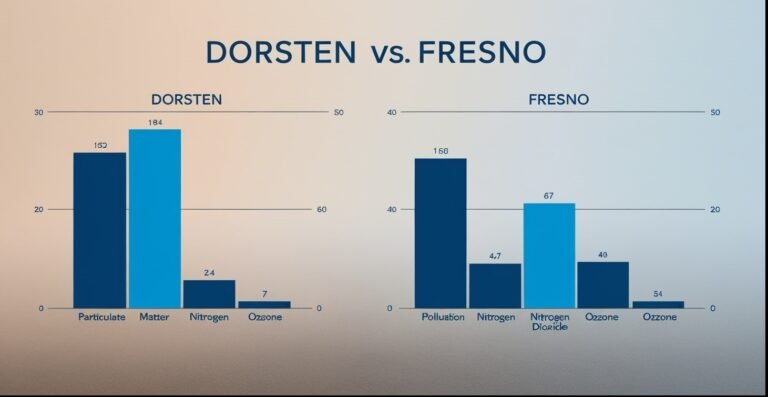Digital News Alerts: Staying Informed in the Information Age
In today’s fast-paced world, staying up-to-date with the latest news and information is more important than ever. Digital news alerts have emerged as a powerful tool to help individuals and businesses stay informed about topics that matter most to them. This article will explore the world of digital news alerts, their benefits, how to set them up, and best practices for using them effectively.
What Are Digital News Alerts?
Digital news alerts are automated notifications that deliver relevant news and information directly to users based on their specified interests or keywords. These alerts can be delivered through various channels, including:
- Mobile app notifications
- SMS text messages
- Browser notifications
- RSS feeds
By leveraging digital news alerts, users can effortlessly stay informed about breaking news, industry trends, competitor activities, and other topics of interest without having to actively search for information.
The Evolution of News Consumption
To understand the significance of digital news alerts, it’s essential to consider how news consumption has evolved over time:
- Traditional print media
- Radio and television broadcasts
- Online news websites
- Social media platforms
- Personalized news aggregators
- Digital news alerts
This evolution reflects a shift towards more personalized, on-demand access to information. Digital news alerts represent the latest step in this progression, allowing users to receive tailored updates on their preferred topics instantly.
Benefits of Using Digital News Alerts
1. Time-saving
One of the primary advantages of digital news alerts is their ability to save time. Instead of manually searching for updates on various topics, users receive relevant information automatically, allowing them to focus on other important tasks.
2. Customization
Digital news alerts offer a high degree of customization. Users can set up alerts for specific:
- Keywords
- Phrases
- Topics
- Companies
- People
- Locations
This level of personalization ensures that users receive only the most relevant information tailored to their interests and needs.
3. Real-time information
In today’s fast-moving world, staying ahead of the curve is crucial. Digital news alerts provide real-time updates, allowing users to be among the first to know about breaking news or important developments in their areas of interest.
4. Competitive advantage
For businesses, digital news alerts can provide a significant competitive advantage. By monitoring industry trends, competitor activities, and market developments, companies can make informed decisions and respond quickly to changes in their business environment.
5. Expanded knowledge base
By receiving regular updates on diverse topics, users can expand their knowledge base and stay informed about a wide range of subjects. This broader perspective can be valuable in both personal and professional contexts.
Popular Digital News Alert Services
Several platforms and services offer digital news alerts. Here are some of the most popular options:
- Google Alerts: A free service that allows users to monitor the web for new content based on specific keywords or phrases.
- Bing News: Microsoft’s news service that offers personalized alerts and notifications.
- Apple News: Available on iOS devices, Apple News provides customized news alerts based on user preferences.
- Feedly: An RSS reader that aggregates content from various sources and can send alerts based on user-defined topics.
- Mention: A social media and web monitoring tool that provides real-time alerts for brand mentions and industry news.
- Talkwalker Alerts: Similar to Google Alerts, Talkwalker offers email alerts for mentions across the web, including social media platforms.
- IFTTT (If This Then That): A versatile automation platform that can be configured to send news alerts from various sources.
Setting Up Digital News Alerts
The process of setting up digital news alerts may vary depending on the platform or service you choose. However, the general steps are often similar:
- Choose a service: Select a digital news alert service that best suits your needs.
- Create an account: Sign up for an account if required by the service.
- Define your topics: Enter keywords, phrases, or topics you want to monitor.
- Refine your search: Use advanced search operators to narrow down results and improve relevance.
- Set delivery preferences: Choose how often you want to receive alerts and through which channels.
- Test and adjust: Monitor the alerts you receive and refine your settings as needed to optimize relevance and frequency.
Best Practices for Using Digital News Alerts
To make the most of digital news alerts, consider the following best practices:
1. Be specific with keywords
Use specific, targeted keywords to ensure you receive the most relevant information. For example, instead of a broad term like “technology,” use more specific phrases like “artificial intelligence in healthcare” or “5G network deployment.”
2. Use boolean operators
Many digital news alert services support boolean operators to refine searches. For example:
- AND: “artificial intelligence” AND healthcare
- OR: “5G network” OR “5G deployment”
- NOT: “artificial intelligence” NOT gaming
Using these operators can help filter out irrelevant results and improve the quality of your alerts.
3. Set appropriate alert frequencies
Consider how often you need updates on each topic. For some subjects, real-time alerts may be necessary, while for others, a daily or weekly digest might be more appropriate.
4. Regularly review and update your alerts
Periodically review your alert settings and the information you receive. As your interests or business needs change, update your alerts accordingly to ensure continued relevance.
5. Use multiple sources
Don’t rely on a single news alert service. Utilize multiple platforms to ensure comprehensive coverage and diverse perspectives on your topics of interest.
6. Organize your alerts
If you’re using email alerts, create filters or folders to organize incoming notifications. This can help prevent information overload and make it easier to process the alerts you receive.
7. Act on the information
Don’t just passively consume the alerts you receive. Use the information to inform decisions, spark discussions, or inspire new ideas in your personal or professional life.
Digital News Alerts for Different Industries
Different industries can benefit from digital news alerts in unique ways. Here are some examples:
Finance and Investing
- Stock price movements
- Earnings reports
- Regulatory changes
- Market trends
- Mergers and acquisitions
Technology
- Product launches
- Software updates
- Cybersecurity threats
- Emerging technologies
- Industry events and conferences
Healthcare
- Medical breakthroughs
- Public health alerts
- Regulatory updates
- Healthcare policy changes
- Clinical trial results
Marketing and PR
- Brand mentions
- Competitor activities
- Industry trends
- Social media buzz
- Influencer partnerships
Education
- Educational policy updates
- New teaching methodologies
- EdTech innovations
- Research publications
- Funding opportunities
Challenges and Limitations of Digital News Alerts
While digital news alerts offer numerous benefits, it’s important to be aware of potential challenges and limitations:
- Information overload: Receiving too many alerts can lead to information fatigue and reduced productivity.
- False positives: Alerts may sometimes include irrelevant information, especially if keywords are too broad.
- Echo chambers: Overly specific alerts may limit exposure to diverse perspectives and reinforce existing biases.
- Reliability of sources: Not all sources are equally reliable, and alerts may sometimes include inaccurate or biased information.
- Privacy concerns: Some alert services may collect user data, raising potential privacy issues.
- Dependency: Over-reliance on alerts may lead to a passive approach to information gathering and reduced critical thinking skills.
The Future of Digital News Alerts
As technology continues to advance, we can expect digital news alerts to evolve in several ways:
- AI-powered personalization: Machine learning algorithms will become more sophisticated in understanding user preferences and delivering highly personalized alerts.
- Voice-activated alerts: Integration with smart speakers and voice assistants will allow for hands-free consumption of news alerts.
- Augmented reality (AR) integration: News alerts may be delivered through AR interfaces, providing contextual information in real-time.
- Blockchain-verified news: To combat fake news, blockchain technology may be used to verify the authenticity of news sources and content.
- Emotional intelligence: Future alert systems may consider the user’s emotional state and deliver news in a way that minimizes stress and information overload.
- Cross-platform integration: Alerts will become more seamlessly integrated across various devices and platforms, providing a cohesive user experience.
Conclusion
Digital news alerts have become an indispensable tool for staying informed in the fast-paced digital age. By providing personalized, real-time updates on topics of interest, these alerts help individuals and businesses save time, gain competitive advantages, and expand their knowledge base.
As with any technology, it’s important to use digital news alerts thoughtfully and in conjunction with other information-gathering methods. By following best practices, being aware of limitations, and staying adaptable to new developments, users can harness the full potential of digital news alerts to navigate the ever-expanding sea of information effectively.
In an era where information is power, digital news alerts serve as a beacon, guiding users to the most relevant and timely insights. As this technology continues to evolve, it will play an increasingly crucial role in how we consume and interact with news and information in our personal and professional lives.







